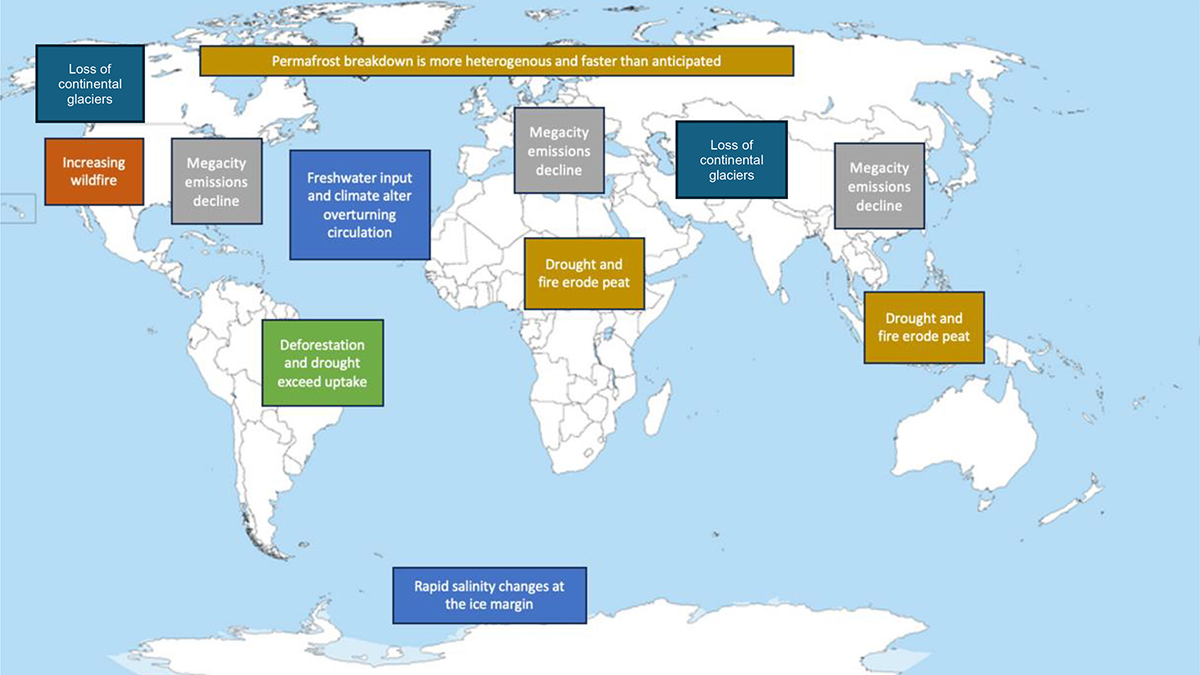Editors’ Highlights are summaries of recent papers by AGU’s journal editors.
Source: AGU Advances
Since 2007, the National Academy for Sciences Engineering and Medicine (NASEM) in the United States has recommended Earth Science research and investment priorities every ten years. The Decadal Survey balances the continuation of essential climate variable time series against unmet measurement needs and new Earth Observations made possible by technological breakthroughs.
The next survey (2027-2028, DS28) will be framed by a rapidly changing world. The climate is changing in both predicted and unexpected ways, and it is challenging to project observing needs for the climate future. Likely changes include more frequent and intense extremes, the potential to cross multiple tipping points, amplifying hydrologic extremes, as well as changing carbon fluxes across ecosystems.
Miner et al. [2024] suggest that the DS28 requires a novel, forward-thinking approach to create an Earth observing system for priorities in the 2030s-2040s. To understand a world increasingly dominated by extremes, the DS28 should strive to project an unpredictable future.
Citation: Miner, K. R., Braghiere, R. K., Miller, C. E., Schlegel, N., & Schimel, D. (2024). A decadal survey without analogs: Earth observation needs for a warming world. AGU Advances, 5, e2023AV001148. https://doi.org/10.1029/2023AV001148
—Donald Wuebbles, Editor, AGU Advances

